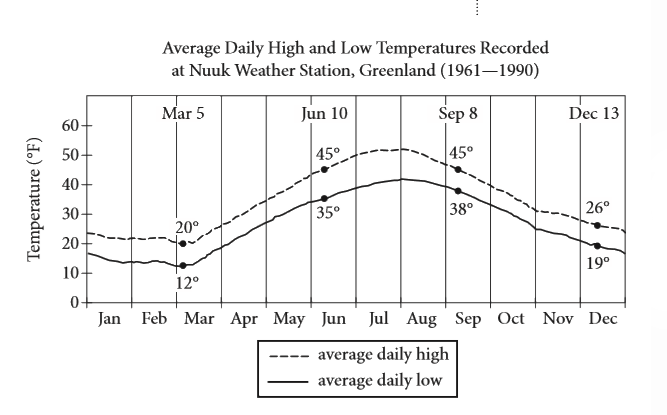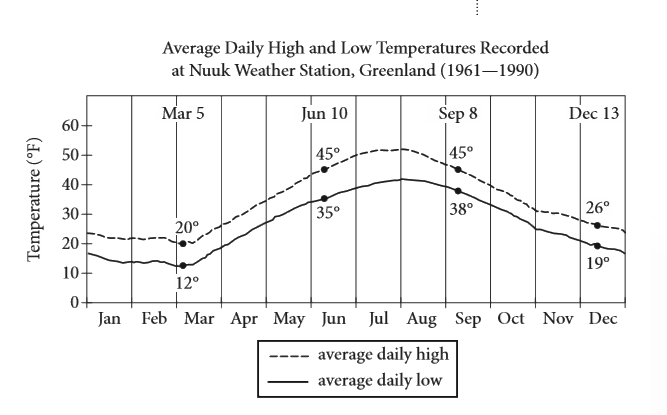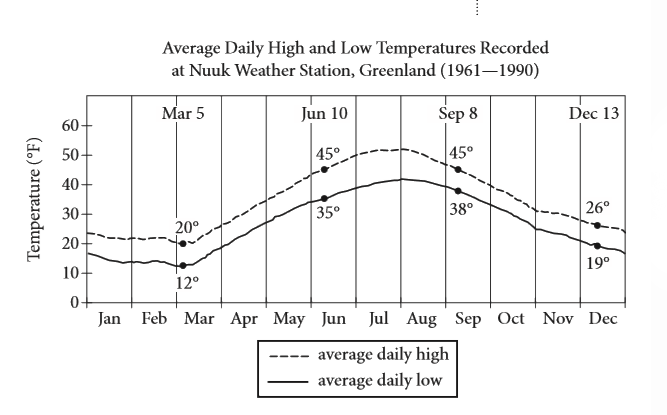Draw a schematic arrangement of the Geiger Marsden experiment. How did the scattering of α particles by a thin foil of gold provide an important way to determine an upper limit on the size of nucleus? Explain briefly.
Step-by-Step Solution:
1. Schematic Arrangement of the Geiger-Marsden Experiment:
- Draw a source of alpha particles (like a radioactive material) emitting alpha particles.
- Place a thin gold foil in the path of the emitted alpha particles.
- Surround the gold foil with a detection screen made of zinc sulfide, which will emit flashes of light when struck by alpha particles.
- Use lead bricks to shield the setup from other radiation and to ensure that alpha particles travel in a straight line towards the gold foil.
2. Observation of Alpha Particle Scattering:
- Most of the alpha particles pass straight through the gold foil without any deflection.
- A small fraction of alpha particles are deflected at various angles, and a very tiny number (about 1 in 8000) are reflected back towards the source.
3. Conclusion about the Nucleus:
- The scattering pattern indicates that the majority of the atom is empty space, as most alpha particles pass through without interaction.
- The deflections suggest that there is a small, dense, positively charged center within the atom, which we identify as the nucleus.
4. Determining the Size of the Nucleus:
- When an alpha particle approaches the nucleus, it experiences electrostatic repulsion due to the positive charge of the nucleus.
- At the point of closest approach (head-on collision), the kinetic energy of the alpha particle is converted into electrostatic potential energy.
- The relationship can be expressed as:
Ek=14πϵ0Z⋅2e⋅2er0
where Ek is the kinetic energy of the alpha particle, Z is the atomic number of the gold nucleus, e is the charge of the electron, and r0 is the distance of closest approach (upper limit of the nucleus size).
5. Calculating the Upper Limit of the Nucleus Size:
- Rearranging the equation gives:
r0=14πϵ02Ze2Ek
- By substituting known values (for example, Z for gold, the charge of the electron, and the kinetic energy of the alpha particles), one can calculate r0, which typically results in a value around 10−14 meters.
- Draw a source of alpha particles (like a radioactive material) emitting alpha particles.
- Place a thin gold foil in the path of the emitted alpha particles.
- Surround the gold foil with a detection screen made of zinc sulfide, which will emit flashes of light when struck by alpha particles.
- Use lead bricks to shield the setup from other radiation and to ensure that alpha particles travel in a straight line towards the gold foil.
- Most of the alpha particles pass straight through the gold foil without any deflection.
- A small fraction of alpha particles are deflected at various angles, and a very tiny number (about 1 in 8000) are reflected back towards the source.
- The scattering pattern indicates that the majority of the atom is empty space, as most alpha particles pass through without interaction.
- The deflections suggest that there is a small, dense, positively charged center within the atom, which we identify as the nucleus.
- When an alpha particle approaches the nucleus, it experiences electrostatic repulsion due to the positive charge of the nucleus.
- At the point of closest approach (head-on collision), the kinetic energy of the alpha particle is converted into electrostatic potential energy.
- The relationship can be expressed as:
Ek=14πϵ0Z⋅2e⋅2er0
where Ek is the kinetic energy of the alpha particle, Z is the atomic number of the gold nucleus, e is the charge of the electron, and r0 is the distance of closest approach (upper limit of the nucleus size).
- Rearranging the equation gives:
r0=14πϵ02Ze2Ek
- By substituting known values (for example, Z for gold, the charge of the electron, and the kinetic energy of the alpha particles), one can calculate r0, which typically results in a value around 10−14 meters.
Topper's Solved these Questions
- BOOK - XII BOARD PREVIOUS YEAR PAPER ENGLISHCHAPTER - XII BOARDSEXERCISE - [Set- II]4videos
XII BOARDS
- BOOK - XII BOARD PREVIOUS YEAR PAPER ENGLISHCHAPTER - XII BOARDSEXERCISE - [Set-III]3videos
XII BOARDS
- BOOK - XII BOARD PREVIOUS YEAR PAPER ENGLISHCHAPTER - XII BOARDSEXERCISE - SET-III, DELHI BOARD4videos
XII BOARDS
- BOOK - XII BOARD PREVIOUS YEAR PAPER ENGLISHCHAPTER - SAMPLE PAPER 2019EXERCISE - SECTION D6videos
SAMPLE PAPER 2019
Similar Questions
If in alpha particle scattering experiment, the gold foil was replaced by thin sheet of solid hydrogen, how would the results change and why ?
View SolutionIn a Geiger- Marsden experiment, calculate the distance of closest approach to the nucleus of Z=80, when an α particle of 8 Me V energy impinges on it before it comes momentarily to rest and reverses its direction.
How will the distance of closest approach be affected when the kinetic energy of the α− particle is doubled ?View Solution
Knowledge Check
- Question 1 - Select One
In a geiger - marsden experiment. Find the distance of closest approach to the nucleus of a 7.7 me v α- particle before it comes momentarily to rest and reverses its direction. (z for gold nucleus = 79) .
A10 fmB20 fmC30 fmD40 fm - Question 2 - Select One
(A) in the experiment of alpha particle scattering, extremely thin gold foils are preferred over other metals.
(R)gold is a ductile material.Aif both assertion and reason are true and reason is the correct explanation of assertion.Bif both assertion and reason are true but reason is not the correct explanation of assertion.Cif assertion is true but reason is false.Dif both assertion and reason are false. - Question 3 - Select One
Dark Snow
Most of Greenland’s interior is covered by a thick layer of ice and compressed snow known as the Greenland Ice Sheet. The size of the ice sheet fluctuates seasonally: in summer, average daily high temperatures in Greenland can rise to slightly above 50 degrees Fahrenheit, partially melting the ice, in the winter, the sheet thickens as additional snow falls, and average daily low temperatures can drop to (12) as low as 20 degrees–––––––––––––––––––––.

Typically, the ice sheet begins to show evidence of thawing in late (13)summer. This follows––––––––––––––––––––––– several weeks of higher temperatures. 14 For example––––––––––––––, in the summer of 2012, virtually the entire Greenland Ice Sheet underwent thawing at or near its surface by mid-July, the earliest date on record. Most scientists looking for the causes of the Great Melt of 2012 have focused exclusively on rising temperatures. The summer of 2012 was the warmest in 170 years, records show. But Jason (15) Box, an associate––––––––––––––––––– professor of geology at Ohio State believes that another factor added to the early (16) (thaw), the “dark snow” problem.
According to Box, a leading Greenland expert, tundra fires in 2012 from as far away as North America produced great amounts of soot, some (17) of it–––––drifted over Greenland in giant plumes of smoke and then (18) fell–––– as particles onto the ice sheet. Scientists have long known that soot particles facilitate melting by darkening snow and ice, limiting (19) it’s–––– ability to reflect the Sun’s rays. As Box explains, “Soot is an extremely powerful light absorber. It settles over the ice and captures the Sun’s heat.” The result is a self-reinforcing cycle. As the ice melts, the land and water under the ice become exposed, and since land and water are darker than snow, the surface absorbs even more heat, which (20) is related to the rising temperatures–––––––––––––––––––––––––––––––––––––––.
[1] Box’s research is important because the fires of 2012 may not be a one-time phenomenon. [2] According to scientists, rising Arctic temperatures are making northern latitudes greener and thus more fire prone.[3] The pattern Box observed in 2012 may repeat (21) itself again––––––––––––, with harmful effects on the Arctic ecosystem. [4] Box is currently organizing an expedition to gather this crucial information. [5] The next step for Box and his team is to travel to Greenland to perform direct sampling of the ice in order to determine just how much the soot is contributing to the melting of the ice sheet. [6] Members of the public will be able to track his team’s progress—and even help fund the expedition—through a website Box has created. (22)ANO CHANGEBsootCof whichDDELETE the underlined portion.
In a Geiger - Marsden experiment, calculate the distance of closest approach to the nucleus of Z=75, when an α - particle of 5 Me V enery impinges on it before it comes momentarily to rest and reverses its direction.
How will the distance of closest approach be affected when the kinetic energy of the α-particle is doubled ?View SolutionIn the gold foil experiment of Geiger and Marsden, that paved the way for Rutherford's model of an atom, ~1.00% of the α-particles were found to deflect at angles >50∘. If one mole of α-particles were bombarded on the gold foil, compute the number of α-particles that would deflect at angles less than 50∘.
View SolutionDark Snow
Most of Greenland’s interior is covered by a thick layer of ice and compressed snow known as the Greenland Ice Sheet. The size of the ice sheet fluctuates seasonally: in summer, average daily high temperatures in Greenland can rise to slightly above 50 degrees Fahrenheit, partially melting the ice, in the winter, the sheet thickens as additional snow falls, and average daily low temperatures can drop to (12) as low as 20 degrees–––––––––––––––––––––.

Typically, the ice sheet begins to show evidence of thawing in late (13)summer. This follows––––––––––––––––––––––– several weeks of higher temperatures. 14 For example––––––––––––––, in the summer of 2012, virtually the entire Greenland Ice Sheet underwent thawing at or near its surface by mid-July, the earliest date on record. Most scientists looking for the causes of the Great Melt of 2012 have focused exclusively on rising temperatures. The summer of 2012 was the warmest in 170 years, records show. But Jason (15) Box, an associate––––––––––––––––––– professor of geology at Ohio State believes that another factor added to the early (16) (thaw), the “dark snow” problem.
According to Box, a leading Greenland expert, tundra fires in 2012 from as far away as North America produced great amounts of soot, some (17) of it–––––drifted over Greenland in giant plumes of smoke and then (18) fell–––– as particles onto the ice sheet. Scientists have long known that soot particles facilitate melting by darkening snow and ice, limiting (19) it’s–––– ability to reflect the Sun’s rays. As Box explains, “Soot is an extremely powerful light absorber. It settles over the ice and captures the Sun’s heat.” The result is a self-reinforcing cycle. As the ice melts, the land and water under the ice become exposed, and since land and water are darker than snow, the surface absorbs even more heat, which (20) is related to the rising temperatures–––––––––––––––––––––––––––––––––––––––.
[1] Box’s research is important because the fires of 2012 may not be a one-time phenomenon. [2] According to scientists, rising Arctic temperatures are making northern latitudes greener and thus more fire prone.[3] The pattern Box observed in 2012 may repeat (21) itself again––––––––––––, with harmful effects on the Arctic ecosystem. [4] Box is currently organizing an expedition to gather this crucial information. [5] The next step for Box and his team is to travel to Greenland to perform direct sampling of the ice in order to determine just how much the soot is contributing to the melting of the ice sheet. [6] Members of the public will be able to track his team’s progress—and even help fund the expedition—through a website Box has created. (22)View SolutionDark Snow
Most of Greenland’s interior is covered by a thick layer of ice and compressed snow known as the Greenland Ice Sheet. The size of the ice sheet fluctuates seasonally: in summer, average daily high temperatures in Greenland can rise to slightly above 50 degrees Fahrenheit, partially melting the ice, in the winter, the sheet thickens as additional snow falls, and average daily low temperatures can drop to (12) as low as 20 degrees–––––––––––––––––––––.

Typically, the ice sheet begins to show evidence of thawing in late (13)summer. This follows––––––––––––––––––––––– several weeks of higher temperatures. 14 For example––––––––––––––, in the summer of 2012, virtually the entire Greenland Ice Sheet underwent thawing at or near its surface by mid-July, the earliest date on record. Most scientists looking for the causes of the Great Melt of 2012 have focused exclusively on rising temperatures. The summer of 2012 was the warmest in 170 years, records show. But Jason (15) Box, an associate––––––––––––––––––– professor of geology at Ohio State believes that another factor added to the early (16) (thaw), the “dark snow” problem.
According to Box, a leading Greenland expert, tundra fires in 2012 from as far away as North America produced great amounts of soot, some (17) of it–––––drifted over Greenland in giant plumes of smoke and then (18) fell–––– as particles onto the ice sheet. Scientists have long known that soot particles facilitate melting by darkening snow and ice, limiting (19) it’s–––– ability to reflect the Sun’s rays. As Box explains, “Soot is an extremely powerful light absorber. It settles over the ice and captures the Sun’s heat.” The result is a self-reinforcing cycle. As the ice melts, the land and water under the ice become exposed, and since land and water are darker than snow, the surface absorbs even more heat, which (20) is related to the rising temperatures–––––––––––––––––––––––––––––––––––––––.
[1] Box’s research is important because the fires of 2012 may not be a one-time phenomenon. [2] According to scientists, rising Arctic temperatures are making northern latitudes greener and thus more fire prone.[3] The pattern Box observed in 2012 may repeat (21) itself again––––––––––––, with harmful effects on the Arctic ecosystem. [4] Box is currently organizing an expedition to gather this crucial information. [5] The next step for Box and his team is to travel to Greenland to perform direct sampling of the ice in order to determine just how much the soot is contributing to the melting of the ice sheet. [6] Members of the public will be able to track his team’s progress—and even help fund the expedition—through a website Box has created. (22)View SolutionDark Snow
Most of Greenland’s interior is covered by a thick layer of ice and compressed snow known as the Greenland Ice Sheet. The size of the ice sheet fluctuates seasonally: in summer, average daily high temperatures in Greenland can rise to slightly above 50 degrees Fahrenheit, partially melting the ice, in the winter, the sheet thickens as additional snow falls, and average daily low temperatures can drop to (12) as low as 20 degrees–––––––––––––––––––––.

Typically, the ice sheet begins to show evidence of thawing in late (13)summer. This follows––––––––––––––––––––––– several weeks of higher temperatures. 14 For example––––––––––––––, in the summer of 2012, virtually the entire Greenland Ice Sheet underwent thawing at or near its surface by mid-July, the earliest date on record. Most scientists looking for the causes of the Great Melt of 2012 have focused exclusively on rising temperatures. The summer of 2012 was the warmest in 170 years, records show. But Jason (15) Box, an associate––––––––––––––––––– professor of geology at Ohio State believes that another factor added to the early (16) (thaw), the “dark snow” problem.
According to Box, a leading Greenland expert, tundra fires in 2012 from as far away as North America produced great amounts of soot, some (17) of it–––––drifted over Greenland in giant plumes of smoke and then (18) fell–––– as particles onto the ice sheet. Scientists have long known that soot particles facilitate melting by darkening snow and ice, limiting (19) it’s–––– ability to reflect the Sun’s rays. As Box explains, “Soot is an extremely powerful light absorber. It settles over the ice and captures the Sun’s heat.” The result is a self-reinforcing cycle. As the ice melts, the land and water under the ice become exposed, and since land and water are darker than snow, the surface absorbs even more heat, which (20) is related to the rising temperatures–––––––––––––––––––––––––––––––––––––––.
[1] Box’s research is important because the fires of 2012 may not be a one-time phenomenon. [2] According to scientists, rising Arctic temperatures are making northern latitudes greener and thus more fire prone.[3] The pattern Box observed in 2012 may repeat (21) itself again––––––––––––, with harmful effects on the Arctic ecosystem. [4] Box is currently organizing an expedition to gather this crucial information. [5] The next step for Box and his team is to travel to Greenland to perform direct sampling of the ice in order to determine just how much the soot is contributing to the melting of the ice sheet. [6] Members of the public will be able to track his team’s progress—and even help fund the expedition—through a website Box has created. (22)View Solution

